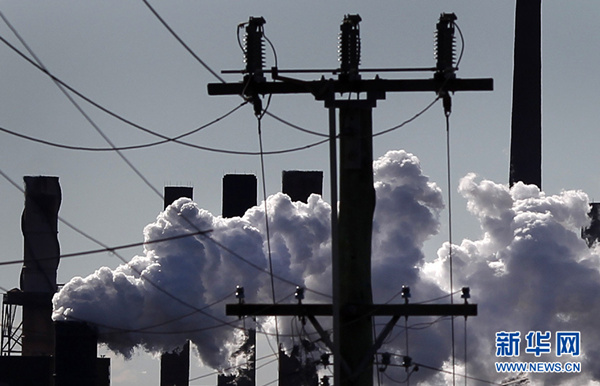UNEP report reviews INDCs ahead of Paris climate meeting
chinagate.cn, November 6, 2015 Adjust font size:
Existing policies and strong engagement by nations submitting their contributions ahead of the Paris climate meeting will limit anthropogenic greenhouse gas(GHG) emissions by 2030, but a new climate agreement can encourage further action to limit global temperature rise to 2°C by 2100, according to a new United Nations Environment Programme (UNEP) report.
The Emissions Gap Report is an authoritative assessment undertaken by a team of leading scientists and modelling experts from around the world. It presents an assessment of the 119 Intended Nationally Determined Contributions (INDCs) submitted the UN Framework Convention on Climate Change (UNFCCC) by Oct. 1, 2015, covering 146 countries (including the European Union submitting as a bloc) and up to 88 percent of global GHG emissions in 2012.
The INDCs represent GHG emission reductions of 4 to 6 gigatonnes of carbon dioxide equivalent per year (GtCO2e/yr) in 2030 compared to projected emissions under current policy trajectories. 2030 projections based on current policies are themselves 5 GtCO2e per year lower than the estimate of 65 GtCO2e, based on the Intergovernmental Panel on Climate Change's Fifth Assessment Report scenarios, which assumed no additional climate policies are put in place after 2010.
This indicates that efforts to tackle climate change, including those taken before the Paris agreement and full implementation of the INDCs, could cut up to 11 GtCO2e from projected emissions in 2030. This is however around half of the total required to reach the global emission levelof 42 GtCO2e in 2030 consistent with having a likely chance (>66 percent) of staying below the 2°C target in 2100.
The challenge is to bend the emissions trajectory down as soon as possible to ensure that the net zero emissions goal in 2060-2075 is within reach.
UNEP Executive Director Achim Steiner said, “The current INDCs, combined with policies over the last few years, present a real increase in ambition levels and demonstrate an unprecedented commitment and engagement by member states in tackling this major global challenge.
“The INDCs assessed in this Emissions Gap report signal a breakthrough in terms of international efforts to bend the curve of future emissions. While in themselves not sufficient to limit global temperature rise to the recommended level of 2 °C this century, they represent a historic step in the direction of decarbonizing our economies. However, in order to close the gap it is essential that the Paris Agreement adopt a dynamic approach in which ambitions, the mobilization of climate finance and other forms of cooperation can be adjusted upwards at regular intervals.”
If all INDCs are fully implemented, the 2030 emissions gap would still be 12 GtCO2e, putting the world on track to a temperature rise of around 3 degree Celsius by 2100, and bringing significant climate impacts. However this scenario assumes that nations would not review and further accelerate efforts in subsequent years – i.e. in 2025 or 2030. The report also shows the uncertainties that exist for different scenarios based on the best available scientific evidence.
The report also recommends early action on climate to keep costs as low as possible and avoid deeper and more challenging cuts later.
